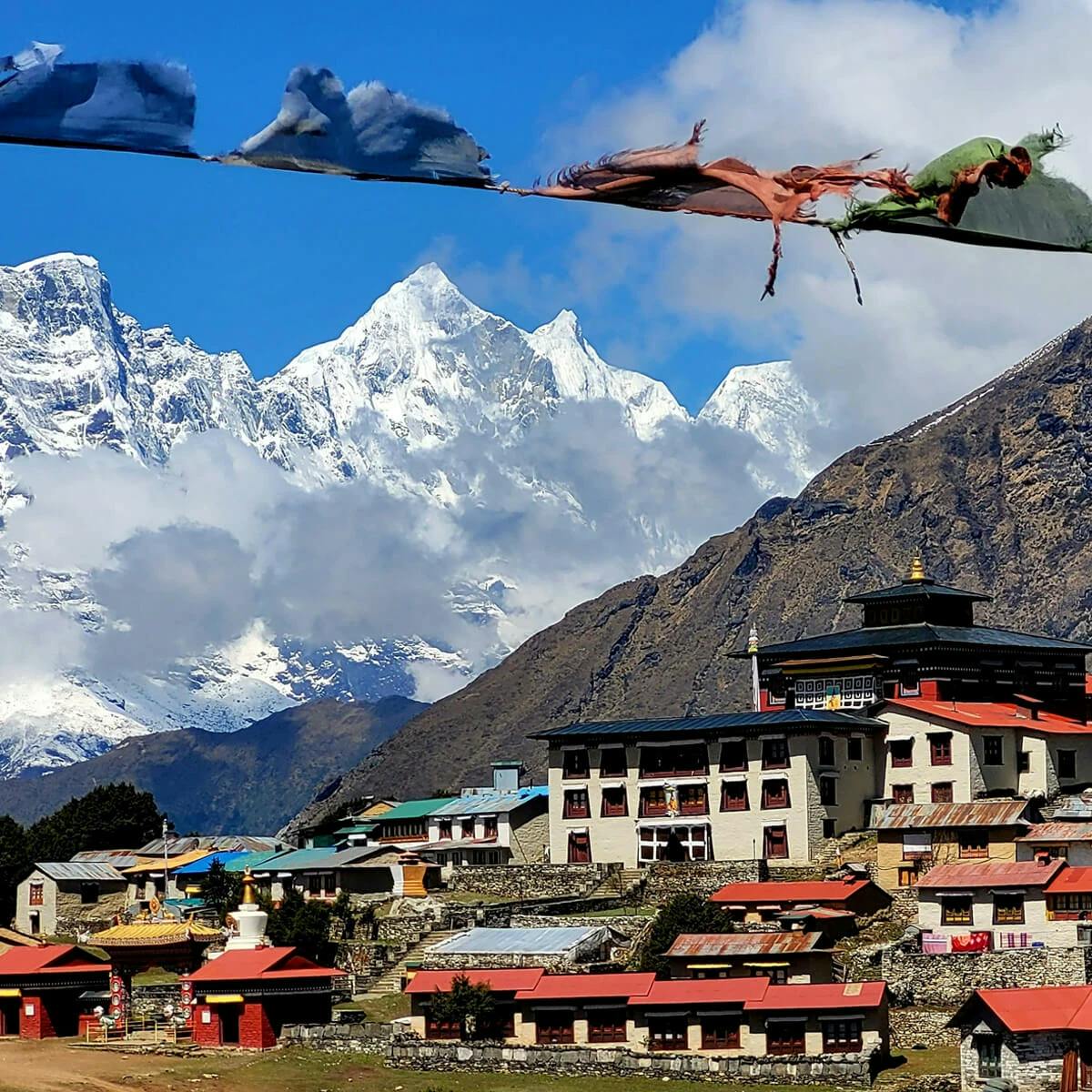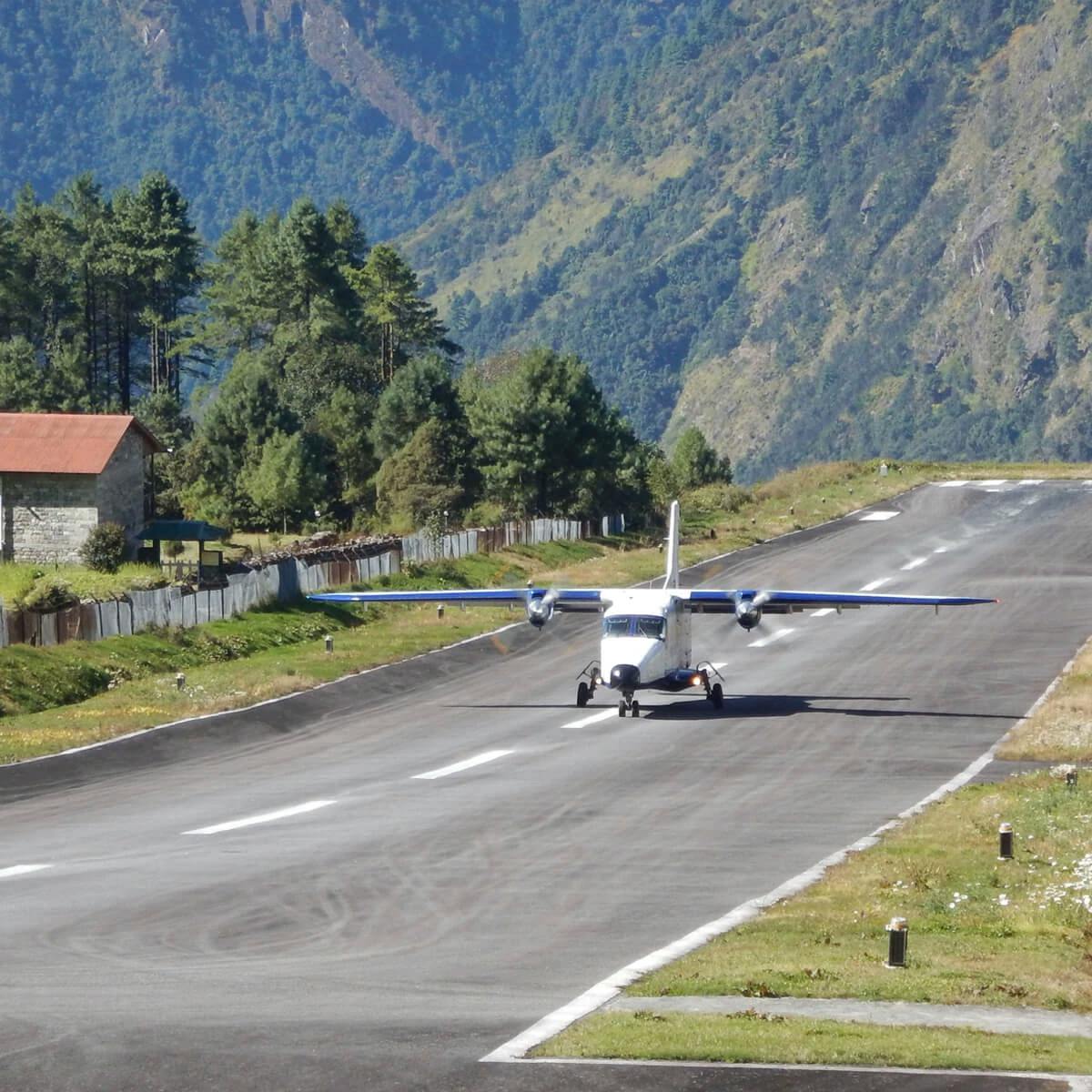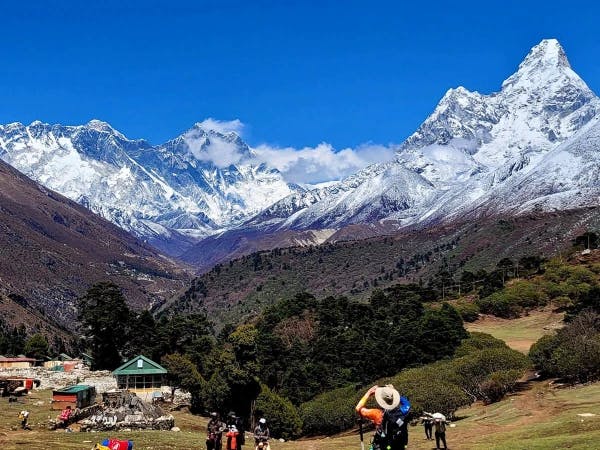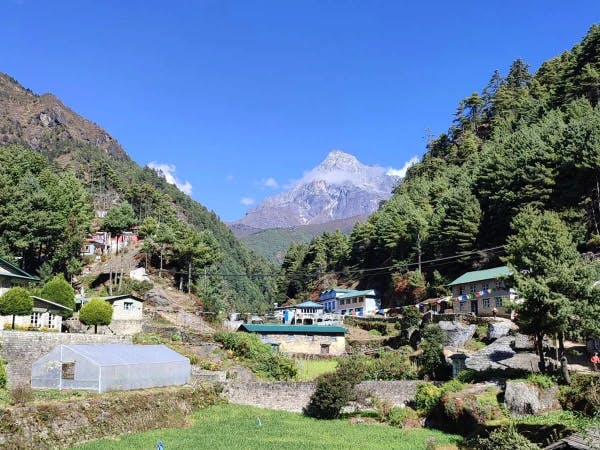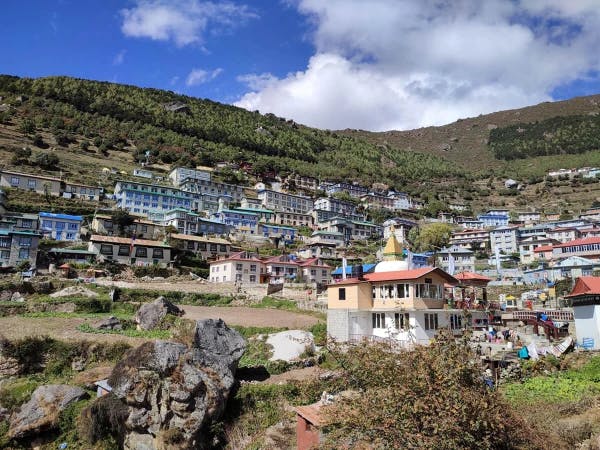The Gokyo Lake Cho La Pass Everest Base Camp Trekking is one of those classic Himalayan routes guaranteeing the adventure of a lifetime to relish most of the highlights the Everest region offers. Located in the northeastern part of the country, bordering the Tibetan Autonomous Region of China, the Everest region is locally known as the Khumbu Valley, renowned for its scenically rich landscapes, daring high mountain passes, and never-before-seen Sherpa cultural immersion.
The combined journey to the Gokyo Cho La Pass Everest Base Camp hence stands out as a must to engage yourself in adventure in the holidays that take you to the heart of the Himalayas in the Everest Base Camp, passing by one-of-a-kind alpine lakes and their valley called Gokyo, along with the crossing of the major high mountain pass, Cho La at an elevation of 5,420 m, catering interest to all the daredevils across the globe seeking an extra spice of life in the Himalayas.
Further, the trekking trail to Gokyo Cho La Pass Everest Base Camp gives you access to the most stunning sight of the surrounding panoramic snow-capped mountain ranges from Kala Patthar and Gokyo Ri, serving as some of the best viewpoints on making it through mountainous rugged terrains, steep ascends and descends amidst the varying landscapes, and several Sherpa dwellings such as Namche Bazaar, Gorak Shep, and Pheriche, providing a valuable insight into the lives of Sherpa communities admired as ‘The Tigers of Snow’ for their ability to adapt to the arduous mountains and their environment.
Therefore, the upper Himalayan expedition following the shimmering Dudh Koshi River in the Khumbu region, exploring lush forests of pine, rhododendron, and occasional juniper in the Sagarmatha National Park, and the Gokyo Cho La Pass Everest Base Camp reaching the foot of the earth’s tallest peak, Mt. Everest, crossing the Cho La Pass, and taking a stroll around the Gokyo Lake and valley is surreal, not only a trekking to the high Himalayas but also a cultural odyssey, a nature excursion to be called the once-in-a-while unforgettable journey worth every step.
Highlights
- Fly to one of the airports at the highest altitude in the world, Lukla Airport.
- Experience the enriching mountain life in the Sherpa villages of the Khumbu region, stopping at various local settlements such as Namche Bazaar, Dole, Thagnak, and others.
- Relish the spectacular views of various mountain ranges such as Cho Oyu, Ama Dablam, Lhotse, and Nuptse, including the top of the world, Mt. Everest.
- Discover the wide array of flora and fauna in the UNESCO world’s natural heritage site, Sagarmath National Park.
- Immerse yourself in the thrilling side trip to Gokyo Ri and Kala Patthar for an extraordinary look out at the region's top-notch snow-capped peaks, landscapes, and valleys below.
- Challenge one of the high mountain passes and achieve the ultimate serenity of being at some of the highest elevations in the Everest region.
- An opportunity to unwind yourself in the tranquil valleys and lakes of glistening Gokyo, etc.
What to expect at the combined trekking to the Gokyo Cho La Pass Everest Base Camp?
The joint trekking to Gokyo, crossing Cho La Pass, and reaching Everest Base Camp in the region, which is popular among trekkers, nature lovers, mountaineers, and all other sorts of adventurers equally for its alluring mountain scenery, rich biodiversity, and warming Sherpa culture, is an unforgettable adventure offering everlasting memories traversing across the best of the Everest region’s natural beauty, cultural heritage, and mountaineering history.
It offers a balanced adventurous section that will push your limits, put lights on your spirit, and give you time for self-discovery, love, and reflection as well along the trekking route, where you can expect the unexpected crafting of an epic voyage to boast about for a lifetime with:
Sherpa culture encounters in Namche Bazaar and other mountain villages
The trekking trail to Gokyo Cho La Pass Everest Base Camp passes by several traditional villages such as Phakding, Namche, Dole, and others characterized by stone houses with flat roofs, numerous ancient Buddhist monasteries, chortens, and Mani walls festooned, showcasing the region’s richness in cultural heritage. At the same time, the locals engage themselves primarily in agriculture, livestock rearing, and weaving as well.
The Namche alone boasts hustling and bustling Sherpa markets, museums, monasteries, and gompas, along with some of the local delicacies to savor before hoping for further altitude, serving as the main trading center and gateway to the Everest region at an altitude of 3,440m above sea level on the trekking route to the Gokyo Cho La Pass and Everest Base, fascinating trekkers and travelers.
Hence, visiting these villages of Everest adds much to the cultural endeavor while they keep you warm and welcomed with their genuine hospitality and friendliness, giving you an insider insight into a simple yet extremely rich customary Himalayan lifestyle deeply rooted in nature and its people along the voyage to the Gokyo Cho La Pass Everest Base Camp.
The Famous Gokyo Lake
As indicated by the name, traversing to the Gokyo Cho La Pass Everest Base Camp takes you to the oligotrophic glacial lakes of the Everest region, Gokyo, a group of six alpine lakes in the Sagarmatha National Park, ranging in altitude from 4,7000 to 5,000m above sea level, named after the nearby peak called Gokyo Ri.
Serving as the birthplace of the main river system in the Khumbu region, Dudh Kunda stands for its milk-like appearance of water. The Gokyo Lakes, in fact, are the world’s highest freshwater to witness the out-of-the-world beauty, serene turquoise waters, and jaw-dropping sights of the surrounding snow-capped peaks such as Lhotse, Nuptse, and others, including the world’s highest mountain, Mt. Everest.
A visit to the Gokyo Lake is hence a must during the Gokyo Lake Cho La Pass Everest Base Camp, adding another dimension of beauty and thrill to the overall voyage to the preexisting marvel and adventure of the Everest region.
High mountain pass, Cho La
The combined trek to Gokyo Cho La Pass and Everest Base Camp introduces you to one of the most physically demanding mountain passes at a greater altitude of around 5,420 m (17,780 ft), Cho La Pass, to be awestruck by the precious backdrop of the snow-capped peaks involving Cho Oyu, Everest, Ama Dablam, Lhotse, and others, crafting excellent photography opportunities.
Although making it through the Cho La Pass is going to be tough in a few sections, including rugged and rocky terrain, steep ascents and descents on both sides of the pass across the largest glacier in the Nepalese Himalayas, and Ngozumpa requiring a stable amount of physical fitness, determination level, and some preparation along with thorough acclimatization, cracking of the Cho La Pass during the Gokyo Cho La Pass Everest Base Camp Trekking is a challenging yet most rewarding part of the overall journey.
The mountaineer's paradise, Everest Base Camp
Standing at the foot of the world’s highest peak, Mt. Everest (Sagarmatha or Chomolungma), the Everest Base Camp is no wonder one of the most significant highlights of the journey to the Gokyo Cho La Pass Everest Base Camp expedition to witness the iconic Khumbu Icefalls, Glacier, and the intimate sights of the surrounding sky's towering peaks in the tranquil atmosphere of the legendary mountaineering hub.
Situated at an altitude of 5,364 m in Nepal, the South Base Camp of Everest has been functioning as the starting point for mountaineers attempting to summit Mt. Everest, granting a true sense of achievement and taking you through gorgeous landscapes on earth ranging from lush rhododendron forests, tiny yet scenic Sherpa dwellings, and rugged Himalayan terrain with glacial moraines during an extraordinary cultural and natural odyssey to the Gokyo Cho La Pass Everest Base Camp.
It is likely to get you all pumped up on getting to encounter and interact with the climbers hoping for the top of the world, Mt. Everest, especially in the months of spring and autumn at the bottom of it in Everest Base Camp, referred to as the mecca for adventure seekers and nature enthusiasts, granting the best grandeur of the world’s largest mountain assuring allure to the journey.
The astonishing viewpoint of the Everest region, Kala Patthar
Kala Patthar is the highest altitude of overall adventurous trekking to the Gokyo Cho La Pass Everest Base Camp at an elevation of 5,545 m/18,192 ft, providing unrivaled panoramic views of the Everest Himalayas, including Everest (Sagarmatha), Lhotse, Nuptse, and Pumori, specifically during sunrise and sunset when the hues of the sky change into a play of light and shadows in a contrasting magnificent of snow-capped white peaks seemingly just below the sky.
Translating to ‘black rock', the Kala Patthar is undeniably the best destination to experience the 360-degree full vista of the surrounding Himalayan landscape and majestic peaks stretching as far as possible, followed by an exclusive closer and clearer perspective of the globe’s grandest peak, Mt. Everest, bathed in the golden light of the setting or rising sun, is amazingly unforgettable, initiating endless opportunities to capture in the photograph, evoking a profound sense of awe, reverence, and a true connection to the raw Himalayan wilderness.
Overall, Kala Patthar alone is a bucket list must-visit destination for trekkers, travelers, and adventurers in the Everest region to hike up early in the morning to watch the ever-changing colors of the sky in sharp contrast to alluring peaks and observe the spiritual enrichment when the whole natural beauty of the Everest region is at its full glory, imprinting an everlasting impression during the Gokyo Cho La Pass Everest Base Camp Trek.
Why is the 16-day trekking itinerary and route to the Gokyo Cho La Pass Everest Base Camp the best?
The 16-day itinerary and route crafted by Ammonite Adventure and Treks for journeying the Gokyo Cho La Pass can be customized as per the needs, preferences, and time schedule of the trekkers and travelers to cater to the niche of your interest and exact requirements, allowing greater flexibility in terms of pace, fitness level, and likings to ensure a more holistic trekking experience in the Everest region.
Nonetheless, the 16-day itinerary to Gokyo, Cho La Pass, and Everest Base Camp is our standard package, following the route that takes you through the diverse landscapes, cultural heritage, and challenges, offering a comprehensive experience of the Everest region, granting you adequate acclimatization on spending days and a few extra nights at Namche, and balanced jaunting each day without missing any of the highlights of the Khumbu region, granting you more than just a leisure hike that you can recall through your lifetime.
Here’s what you might want to consider if you are looking for a more pleasurable hike to the Everest region in comparatively shorter trek days than the Gokyo Cho La Pass:
- Everest Base Camp Trek - 14 Days
- Gokyo Lake Trekking - 12 Days
- Tengboche Everest View Trek - 9 Days
Gokyo Cho La Pass Everest Base Camp Trekking Cost
The overall cost of the thrilling long Gokyo Cho La Pass Everest Base Camp Himalayan trekking can range from USD 1,000 to USD 3,000 based on the duration of the trek, the level of comfort you are seeking, the services you are looking forward to enjoying, the number of people in your group, the increment or decrease in the trekking day, and the upgrade or degradation of the package service.
Commonly, solo treks tend to cost you slightly more than group journeys to the Himalayas, while you will share precious memories along with the expense of a group odyssey to the Gokyo Cho La Pass Everest Base Camp. For a more comprehensive budget plan, Ammonite Adventures and Treks is always here for you, 24/7. Contact us now. We have been happy to provide customized itineraries and budget plans as per the needs and preferences of our clients for more than two decades.

